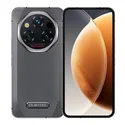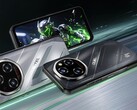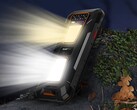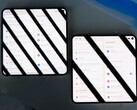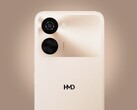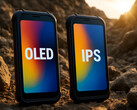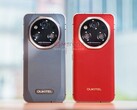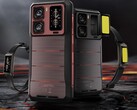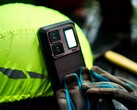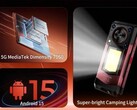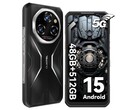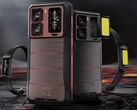Verdict on the Oukitel WP210
A nice, relatively lightweight outdoor phone with good battery life, protection from the elements, a fast SoC and even an OLED display for greater colour brilliance. It actually sounds too good to be true. And yet the Oukitel WP210 largely lives up to its own claims.
You can choose between a faux leather back or a textured plastic back, the power is sufficient for more demanding activities, and the battery lasts for up to two days. Charging is reasonably fast, and the cameras take decent pictures.
Overall, Oukitel has struck a sweet spot with the WP210 between robustness and design, between outdoor compatibility and performance. The manufacturer also offers the phone at a competitive price in its own store.
However, the dream is somewhat marred by the display's inaccurate colour representation. Despite OLED technology, the screen is not overly bright, and you have to put up with PWM flickering. The lack of an update promise is also a problem.
Pros
Cons
Price and availability
At amazon.com the Oukitel WP210 is available for $599.99.
In the Oukitel Store however, the phone is offered a lot cheaper: At only $399.99 and a further 10% dicount with the code OUK10.
Table of Contents
- Verdict on the Oukitel WP210
- Specifications
- Case and features – Three back cover options
- Communication and operation – Smooth operation
- Software and sustainability – No promise of updates
- Cameras – Acceptable image quality
- Display – OLED, surprisingly enough
- Performance, emissions and battery life – plenty of power with the Oukitel WP210
- Notebookcheck overall rating
- Possible alternatives compared
Specifications
Case and features – Three back cover options
The Oukitel WP210 is an outdoor phone that, at 311 grams, is still reasonably comfortable to hold. The casing is not overly bulky, and the manufacturer has taken care to avoid an industrial design with visible screws.
Oukitel has come up with three stylish colours for its robust mobile phone, which also differ in terms of material: while the grey and blue versions feature a subtle diamond pattern on the back, the red option stands out with its faux leather back.
All versions are robust, as the device is protected by Gorilla Glass 5 on the front and is IP68/69K certified. This means that drops from moderate heights and shallow freshwater should not be a problem.
512 GB of mass storage and 12 GB of RAM are standard features given the high price point of this outdoor smartphone. An infrared blaster allows you to control televisions, and NFC enables contactless payment.
Communication and operation – Smooth operation
WiFi 6 is used as the fastest WLAN standard. The data rates achieved are OK at around 600–700 Mbit/s on average, but there are frequent brief but severe drops in transmission speeds.
Many frequencies and 5G are available for the mobile network. However, the WP210 is not a true world phone, so you should check before travelling abroad.
The 120 Hz screen displays touchscreen inputs very quickly and the system feels smooth. Operation is precise and the hardware buttons are easy to feel. On the left is a smart key that can be freely assigned.
The phone can be unlocked using a fingerprint sensor behind the screen, which proved reliable in testing, or with 2D facial recognition via the front camera.
| Networking | |
| Oukitel WP210 | |
| iperf3 transmit AXE11000 | |
| iperf3 receive AXE11000 | |
| Oukitel WP300 | |
| iperf3 transmit AXE11000 | |
| iperf3 receive AXE11000 | |
| Doogee Blade 20 Turbo | |
| iperf3 transmit AXE11000 | |
| iperf3 receive AXE11000 | |
| Samsung Galaxy XCover 7 Pro | |
| iperf3 transmit AXE11000 6GHz | |
| iperf3 receive AXE11000 6GHz | |
| Motorola ThinkPhone 25 | |
| iperf3 transmit AXE11000 6GHz | |
| iperf3 receive AXE11000 6GHz | |
| Average 802.11 a/b/g/n/ac/ax | |
| iperf3 transmit AXE11000 | |
| iperf3 receive AXE11000 | |
| iperf3 transmit AXE11000 6GHz | |
| iperf3 receive AXE11000 6GHz | |
| Average of class Smartphone | |
| iperf3 transmit AXE11000 | |
| iperf3 receive AXE11000 | |
| iperf3 transmit AXE11000 6GHz | |
| iperf3 receive AXE11000 6GHz | |
Software and sustainability – No promise of updates
Android 15 is used as the operating system, with hardly any changes. The security patches date from June 2025 and are therefore still reasonably up to date at the time of testing. However, the manufacturer does not say how long updates can be expected, only that there will be updates every six month and that they will listen to community feedback on updates.
It is annoying that Oukitel has not sought Widevine certification, which means that videos from most streaming services can only be enjoyed in SD.
A lot of plastic is used in the packaging, and there are no signs of genuine sustainability efforts.
Cameras – Acceptable image quality
A 108-megapixel camera is located on the back of the smartphone. It is supported by a depth sensor for blur effects and a macro camera, both of which have very low resolution. The main camera takes pictures that appear somewhat cool in terms of colour choice and often lack a little sharpness.
However, the camera can be used without any problems for snapshots on the go, and even in low light, the results are quite decent.
4K videos can be recorded at a maximum of 30 fps. They also appear somewhat blurry at times, but are satisfactory overall.
There is a 32-megapixel camera on the front for selfies, which turn out reasonably well. However, the dynamics in dark areas could be better.
Image comparison
Choose a scene and navigate within the first image. One click changes the position on touchscreens. One click on the zoomed-in image opens the original in a new window. The first image shows the scaled photograph of the test device.
Primary camera - flowersPrimary camera - outsidePrimary camera - low light
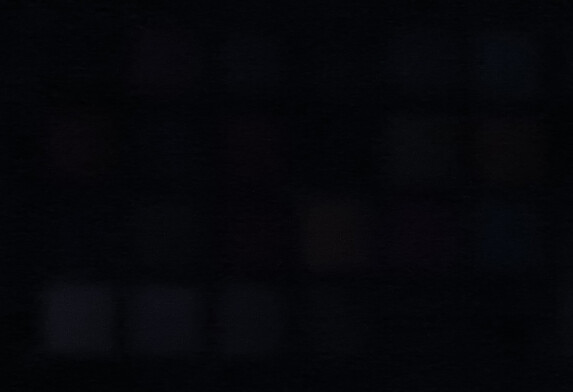
Display – OLED, surprisingly enough
Surprisingly, the Oukitel WP210 even features an OLED display, which is rather unusual for outdoor phones in this price range. However, this also means that you have to put up with PWM flickering at low brightness levels.
The maximum brightness of 523 cd/m² is only average, especially for an outdoor mobile phone. The colour representation is inaccurate in all possible settings.
| |||||||||||||||||||||||||
Brightness Distribution: 96 %
Center on Battery: 532 cd/m²
Contrast: ∞:1 (Black: 0 cd/m²)
ΔE ColorChecker Calman: 8.39 | ∀{0.5-29.43 Ø4.78}
ΔE Greyscale Calman: 6 | ∀{0.09-98 Ø5}
148% sRGB (Calman 2D)
Gamma: 2.106
CCT: 8111 K
| Oukitel WP210 OLED, 2412x1080, 6.7" | Oukitel WP300 IPS, 2460x1080, 6.8" | Doogee Blade 20 Turbo IPS, 1612x720, 6.6" | Samsung Galaxy XCover 7 Pro PLS, 2408x1080, 6.6" | Motorola ThinkPhone 25 p-OLED, 2670x1220, 6.4" | |
|---|---|---|---|---|---|
| Screen | 18% | -5% | 5% | 74% | |
| Brightness middle (cd/m²) | 532 | 860 62% | 475 -11% | 495 -7% | 1125 111% |
| Brightness (cd/m²) | 523 | 841 61% | 441 -16% | 466 -11% | 1109 112% |
| Brightness Distribution (%) | 96 | 93 -3% | 88 -8% | 86 -10% | 97 1% |
| Black Level * (cd/m²) | 0.46 | 0.43 | 0.58 | ||
| Colorchecker dE 2000 * | 8.39 | 7.73 8% | 7.83 7% | 5.85 30% | 1.95 77% |
| Colorchecker dE 2000 max. * | 17.38 | 15.66 10% | 11.09 36% | 9.78 44% | 3.37 81% |
| Greyscale dE 2000 * | 6 | 7.8 -30% | 8.3 -38% | 7 -17% | 2.4 60% |
| Gamma | 2.106 104% | 2.293 96% | 2.68 82% | 2.231 99% | 2.099 105% |
| CCT | 8111 80% | 8051 81% | 8806 74% | 8691 75% | 6336 103% |
| Contrast (:1) | 1870 | 1105 | 853 |
* ... smaller is better
Screen Flickering / PWM (Pulse-Width Modulation)
| Screen flickering / PWM detected | 120 Hz Amplitude: 17 % | ||
The display backlight flickers at 120 Hz (worst case, e.g., utilizing PWM) . The frequency of 120 Hz is very low, so the flickering may cause eyestrain and headaches after extended use. In comparison: 53 % of all tested devices do not use PWM to dim the display. If PWM was detected, an average of 8111 (minimum: 5 - maximum: 343500) Hz was measured. | |||
Display Response Times
| ↔ Response Time Black to White | ||
|---|---|---|
| 1.8 ms ... rise ↗ and fall ↘ combined | ↗ 0.9 ms rise | |
| ↘ 0.9 ms fall | ||
| The screen shows very fast response rates in our tests and should be very well suited for fast-paced gaming. In comparison, all tested devices range from 0.1 (minimum) to 240 (maximum) ms. » 9 % of all devices are better. This means that the measured response time is better than the average of all tested devices (20.2 ms). | ||
| ↔ Response Time 50% Grey to 80% Grey | ||
| 2.7 ms ... rise ↗ and fall ↘ combined | ↗ 1.5 ms rise | |
| ↘ 1.2 ms fall | ||
| The screen shows very fast response rates in our tests and should be very well suited for fast-paced gaming. In comparison, all tested devices range from 0.165 (minimum) to 636 (maximum) ms. » 11 % of all devices are better. This means that the measured response time is better than the average of all tested devices (31.6 ms). | ||
Performance, emissions and battery life – plenty of power with the Oukitel WP210
The MediaTek Dimensity 8200 is a powerful SoC that easily outperforms similarly priced outdoor phones. The Oukitel WP210 offers very smooth operation and only struggles with very demanding applications. Under prolonged load, the SoC hardly throttles at all, so performance is maintained.
The mono speaker can get quite loud and shows an emphasis on the mid-range in the diagram, with bass barely noticeable. In practice, this results in usable sound, but audio fans will prefer to use headphones or external speakers, which can be connected via USB-C or Bluetooth. Many audio codecs enable good sound transmission without cables.
The battery is quite large at 8,800 mAh, and the runtimes achieved in our Wi-Fi test are 18:39 hours, which is also suitable for longer outdoor trips. The phone can only be charged via cable, but then with up to 45 watts. A full charging cycle takes about 2:30 hours.
| Oukitel WP210 | Oukitel WP300 | Doogee Blade 20 Turbo | Samsung Galaxy XCover 7 Pro | Motorola ThinkPhone 25 | Average 512 GB UFS 3.0 Flash | Average of class Smartphone | |
|---|---|---|---|---|---|---|---|
| AndroBench 3-5 | 9% | 2% | -52% | -18% | -18% | 40% | |
| Sequential Read 256KB (MB/s) | 1009.7 | 1836.5 82% | 1873.2 86% | 1043.4 3% | 975.43 -3% | 1496 ? 48% | 2222 ? 120% |
| Sequential Write 256KB (MB/s) | 966 | 1520.8 57% | 1250.2 29% | 232.6 -76% | 856.48 -11% | 632 ? -35% | 1841 ? 91% |
| Random Read 4KB (MB/s) | 363 | 296 -18% | 280.9 -23% | 194.4 -46% | 287.4 -21% | 236 ? -35% | 294 ? -19% |
| Random Write 4KB (MB/s) | 483.4 | 64.8 -87% | 72.4 -85% | 63.5 -87% | 308.11 -36% | 244 ? -50% | 334 ? -31% |
(-) The maximum temperature on the upper side is 45.7 °C / 114 F, compared to the average of 35.2 °C / 95 F, ranging from 21.9 to 247 °C for the class Smartphone.
(+) The bottom heats up to a maximum of 38.5 °C / 101 F, compared to the average of 34 °C / 93 F
(+) In idle usage, the average temperature for the upper side is 22.7 °C / 73 F, compared to the device average of 32.9 °C / 91 F.
3DMark Steel Nomad Stress Test
| 3DMark | |
| Wild Life Stress Test Stability | |
| Oukitel WP300 | |
| Doogee Blade 20 Turbo | |
| Motorola ThinkPhone 25 | |
| Oukitel WP210 | |
| Samsung Galaxy XCover 7 Pro | |
| Wild Life Extreme Stress Test | |
| Motorola ThinkPhone 25 | |
| Oukitel WP300 | |
| Doogee Blade 20 Turbo | |
| Samsung Galaxy XCover 7 Pro | |
| Oukitel WP210 | |
| Steel Nomad Light Stress Test Stability | |
| Motorola ThinkPhone 25 | |
| Oukitel WP210 | |
| Oukitel WP300 | |
| Doogee Blade 20 Turbo | |
Oukitel WP210 audio analysis
(+) | speakers can play relatively loud (88.4 dB)
Bass 100 - 315 Hz
(-) | nearly no bass - on average 29.6% lower than median
(±) | linearity of bass is average (12.2% delta to prev. frequency)
Mids 400 - 2000 Hz
(±) | higher mids - on average 7% higher than median
(+) | mids are linear (6.3% delta to prev. frequency)
Highs 2 - 16 kHz
(+) | balanced highs - only 3.1% away from median
(±) | linearity of highs is average (7.2% delta to prev. frequency)
Overall 100 - 16.000 Hz
(±) | linearity of overall sound is average (23.3% difference to median)
Compared to same class
» 52% of all tested devices in this class were better, 7% similar, 41% worse
» The best had a delta of 11%, average was 35%, worst was 134%
Compared to all devices tested
» 69% of all tested devices were better, 5% similar, 26% worse
» The best had a delta of 4%, average was 24%, worst was 134%
Motorola ThinkPhone 25 audio analysis
(+) | speakers can play relatively loud (86.6 dB)
Bass 100 - 315 Hz
(-) | nearly no bass - on average 23.8% lower than median
(±) | linearity of bass is average (10.3% delta to prev. frequency)
Mids 400 - 2000 Hz
(±) | reduced mids - on average 5.7% lower than median
(+) | mids are linear (5.6% delta to prev. frequency)
Highs 2 - 16 kHz
(+) | balanced highs - only 4.1% away from median
(+) | highs are linear (4.1% delta to prev. frequency)
Overall 100 - 16.000 Hz
(±) | linearity of overall sound is average (16.6% difference to median)
Compared to same class
» 8% of all tested devices in this class were better, 5% similar, 87% worse
» The best had a delta of 11%, average was 35%, worst was 134%
Compared to all devices tested
» 28% of all tested devices were better, 6% similar, 66% worse
» The best had a delta of 4%, average was 24%, worst was 134%
| Oukitel WP210 8800 mAh | Oukitel WP300 16000 mAh | Doogee Blade 20 Turbo 10300 mAh | Samsung Galaxy XCover 7 Pro 4350 mAh | Motorola ThinkPhone 25 4310 mAh | |
|---|---|---|---|---|---|
| Battery runtime | 60% | 25% | -21% | -24% | |
| WiFi v1.3 (h) | 18.7 | 30 60% | 23.3 25% | 14.8 -21% | 14.3 -24% |
| H.264 (h) | 16.1 | 26.7 | |||
| Reader / Idle (h) | 28.5 | ||||
| Load (h) | 3.4 |
Notebookcheck overall rating
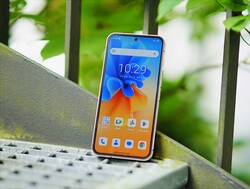
Stylish and sturdy outdoor phone with fast SoC and OLED display.
However, those who value sustainability and long-term update promises will have to look elsewhere.
Oukitel WP210
- 08/15/2025 v8
Florian Schmitt
Possible alternatives compared
Image | Model / Review | Price | Weight | Drive | Display |
|---|---|---|---|---|---|
| Oukitel WP210 MediaTek Dimensity 8200 ⎘ ARM Mali-G610 MP6 ⎘ 12 GB Memory, 512 GB | Amazon: $399.99 List Price: 600€ | 311 g | 512 GB UFS 3.0 Flash | 6.70" 2412x1080 394 PPI OLED | |
| Oukitel WP300 MediaTek Dimensity 7050 ⎘ ARM Mali-G68 MP4 ⎘ 12 GB Memory, 512 GB | Amazon: 1. $39.99 SiuVorZhi LCD Display Compat... 2. $8.69 MAOUICI Tempered Glass for O... 3. $8.72 YQINHHME for Oukitel WP300 T... List Price: 469€ | 514 g | 512 GB UFS 3.1 Flash | 6.80" 2460x1080 395 PPI IPS | |
| Doogee Blade 20 Turbo MediaTek Dimensity 7050 ⎘ ARM Mali-G68 MP4 ⎘ 8 GB Memory, 256 GB | Amazon: $246.99 List Price: 379€ | 331 g | 256 GB UFS 3.1 Flash | 6.60" 1612x720 267 PPI IPS | |
| Samsung Galaxy XCover 7 Pro Qualcomm Snapdragon 7s Gen 3 ⎘ Qualcomm Adreno 810 ⎘ 6 GB Memory, 128 GB UFS 2.1 | Amazon: $576.99 List Price: 609€ | 240 g | 128 GB UFS 2.1 Flash | 6.60" 2408x1080 400 PPI PLS | |
| Motorola ThinkPhone 25 MediaTek Dimensity 7300 ⎘ ARM Mali-G615 MP2 ⎘ 8 GB Memory, 256 GB | Amazon: 1. $6.95 Mr.Shield Screen Protector c... 2. $9.90 Zeking [2+2 Pack for Motorol... 3. $21.95 BoxWave Charger Compatible w... List Price: 499€ | 171 g | 256 GB UFS 3.1 Flash | 6.36" 2670x1220 462 PPI p-OLED |
Transparency
The selection of devices to be reviewed is made by our editorial team. The test sample was provided to the author as a loan by the manufacturer or retailer for the purpose of this review. The lender had no influence on this review, nor did the manufacturer receive a copy of this review before publication. There was no obligation to publish this review. As an independent media company, Notebookcheck is not subjected to the authority of manufacturers, retailers or publishers.
This is how Notebookcheck is testing
Every year, Notebookcheck independently reviews hundreds of laptops and smartphones using standardized procedures to ensure that all results are comparable. We have continuously developed our test methods for around 20 years and set industry standards in the process. In our test labs, high-quality measuring equipment is utilized by experienced technicians and editors. These tests involve a multi-stage validation process. Our complex rating system is based on hundreds of well-founded measurements and benchmarks, which maintains objectivity. Further information on our test methods can be found here.




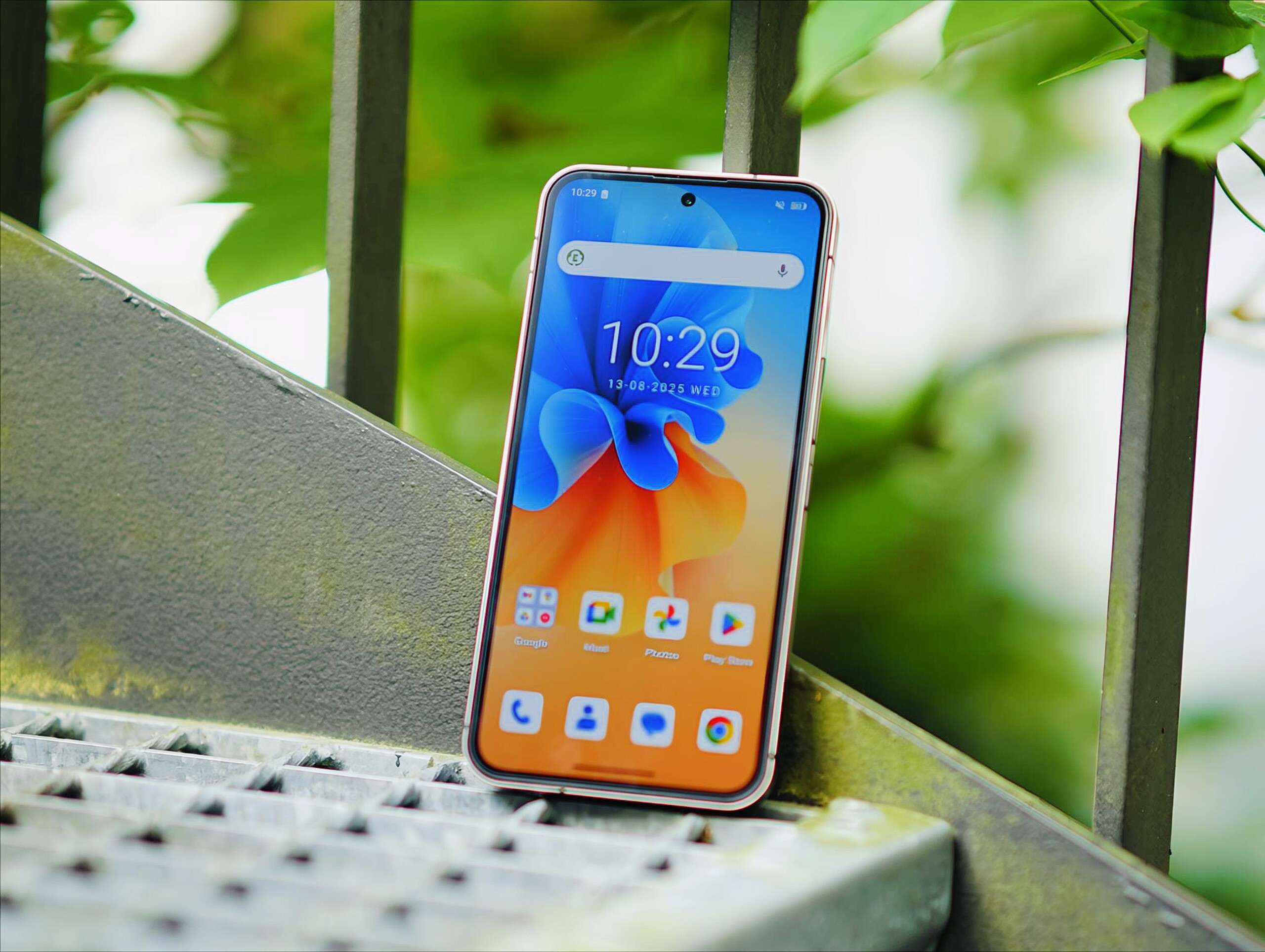

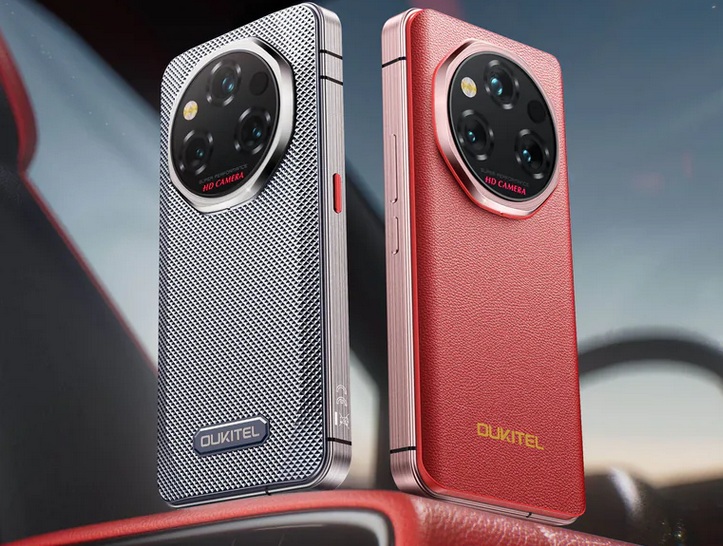


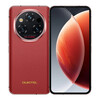
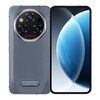
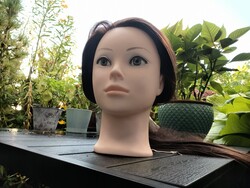

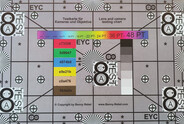
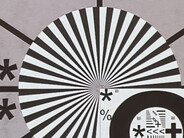
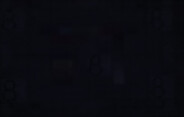
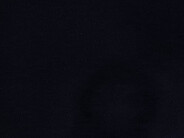
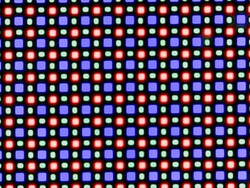
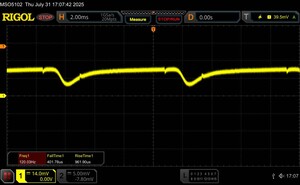
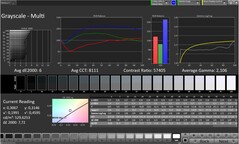
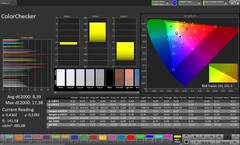
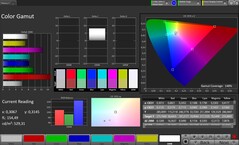
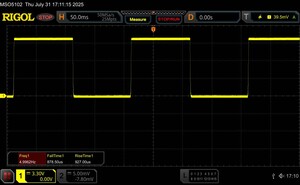

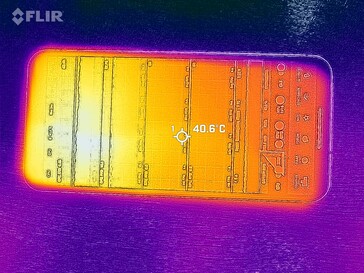
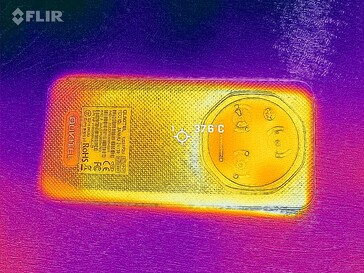
 Total Sustainability Score:
Total Sustainability Score: 